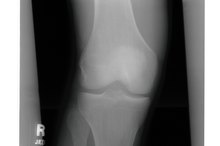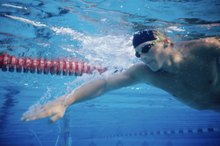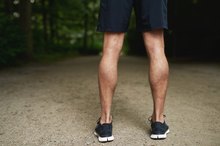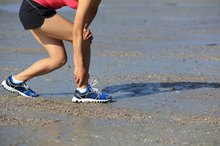Recovery Tips for Calf Pain From Running
A calf strain or pull can sideline you from running, but there are several ways to help recover faster. In order to heal the injury properly, as well as to help prevent future injury, rest and stretching are key.
About Calf Strains
The calf is made up of three muscles, including the two heads of the gastrocnemius and the soleus. Calf muscles pull up on the heel bone during the push-off phase of walking and running and are therefore prone to injury. A calf strain in a runner is most commonly attributed to overuse, according to Josh Clark of Cool Running. These types of muscle pulls are often further aggravated by hill running. Other causes for the calf muscle to become strained during a run include practicing ineffective warmup and cooldown routines, becoming dehydrated, or overpronating, according to Runners Rescue.
- The calf is made up of three muscles, including the two heads of the gastrocnemius and the soleus.
- Other causes for the calf muscle to become strained during a run include practicing ineffective warmup and cooldown routines, becoming dehydrated, or overpronating, according to Runners Rescue.
Recognizing a Calf Strain
Lateral Collateral Ligament Pain From Running
Learn More
There are three grades of calf strains, according to Physio Room. A grade one calf strain may not be noticed until after your run is over and may be accompanied by a sensation of cramping or tightness or a slight twinge of pain when the muscles are stretched or contracted. During a grade two strain there will be immediate pain upon stretching and contracting the muscle and the calf is usually sore to touch. A grade three calf strain is very serious and is marked by an immediate burning or stabbing pain that renders the athlete unable to walk without feeling pain.
- There are three grades of calf strains, according to Physio Room.
- A grade three calf strain is very serious and is marked by an immediate burning or stabbing pain that renders the athlete unable to walk without feeling pain.
Initial Treatment
Initial treatment of a calf strain should consist of using an ice pack and an anti-inflammatory, such as ibuprofen to help reduce swelling, notes Runners Rescue. You should rest for five days for a mild calf strain. Physio Room warns that continuing to run while your calf is mildly strained is not wise because it doesn't take much for a grade one calf muscle strain to turn into a grade two, or a grade two calf strain into a grade three. Heel cushions, sports orthotics and calf sleeves can be used to help speed up the recovery process, provide support and prevent future occurrences of the condition.
- Initial treatment of a calf strain should consist of using an ice pack and an anti-inflammatory, such as ibuprofen to help reduce swelling, notes Runners Rescue.
- Heel cushions, sports orthotics and calf sleeves can be used to help speed up the recovery process, provide support and prevent future occurrences of the condition.
Recovery
Swimming for Hip Flexor Injuries
Learn More
After the rest stage is complete, active rehabilitation can be started and may include resistance exercises and stretching. These are important as they help align the scar tissue which forms during the healing process, according to Physio Room. Core strength and stability exercises can also improve muscle function across the trunk and pelvis, which can reduce the amount of stress on the calf during runs. Doing more warmup and cooldown stretching before and after runs can also help prevent future calf strains.
- After the rest stage is complete, active rehabilitation can be started and may include resistance exercises and stretching.
- Core strength and stability exercises can also improve muscle function across the trunk and pelvis, which can reduce the amount of stress on the calf during runs.
Related Articles
References
- Cool Running; Lower Leg Pain; Josh Clark
- Runners Rescue; Calf Strain and Running
- Physio Room; Calf Muscle Strain in Depth
- Bryan Dixon J. Gastrocnemius vs. soleus strain: how to differentiate and deal with calf muscle injuries. Curr Rev Musculoskelet Med. 2009;2(2):74-7. doi:10.1007/s12178-009-9045-8
- Dixon JB. Gastrocnemius vs. soleus strain: how to differentiate and deal with calf muscle injuries. Current Reviews in Musculoskeletal Medicine. 2009;2(2):74-77.
Writer Bio
Aubrey Bailey has been writing health-related articles since 2009. Her articles have appeared in ADVANCE for Physical Therapy & Rehab Medicine. She holds a Bachelor of Science in physical therapy and Bachelor of Arts in psychology from the University at Buffalo, as well as a post-professional Doctor of Physical Therapy from Utica College. Dr. Bailey is also a certified hand therapist.









